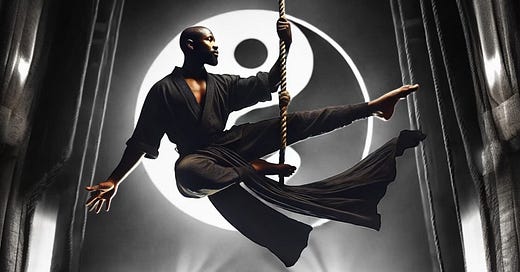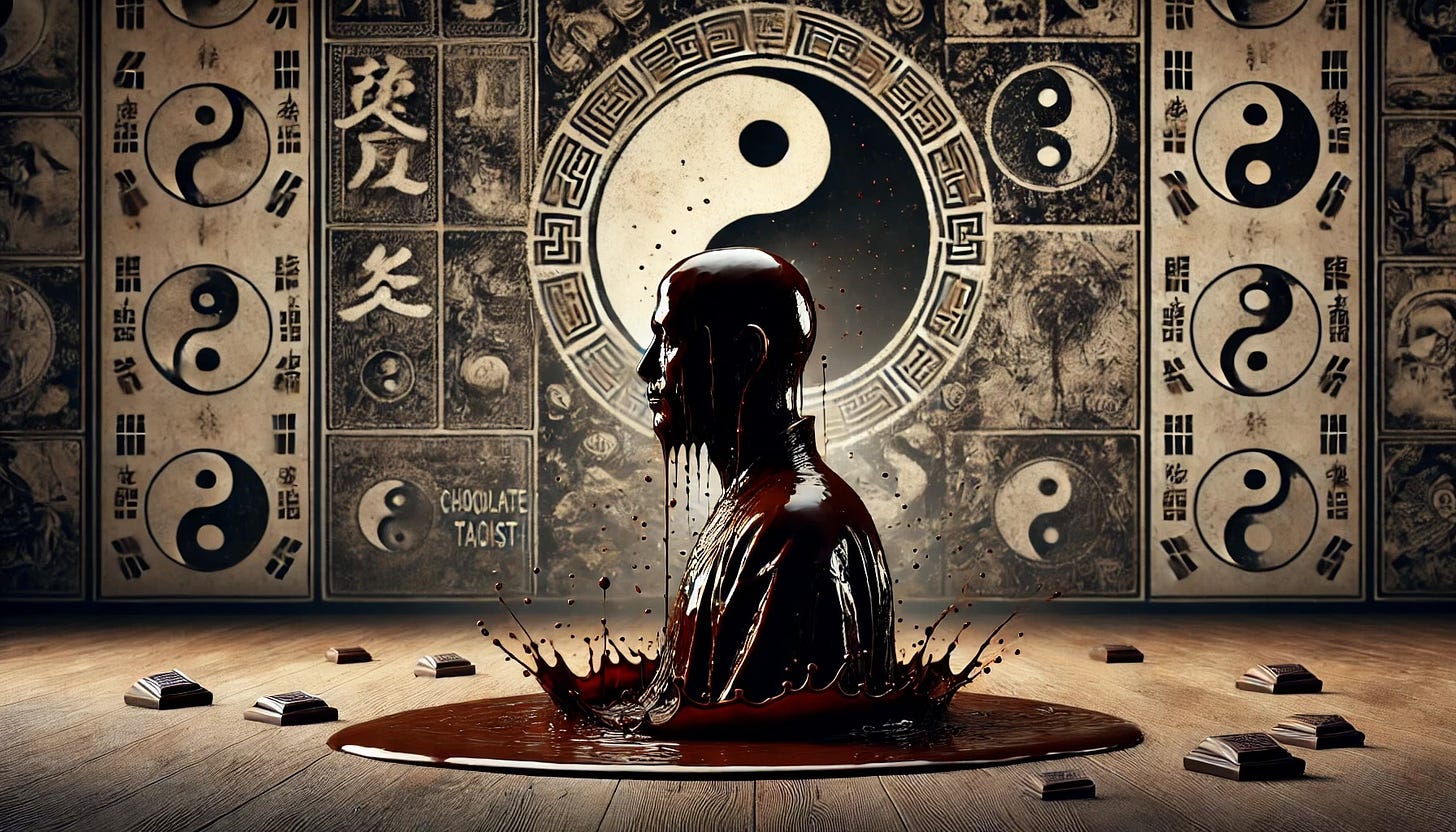In many ways, life is nothing short of a trapeze act. A high-wire dance between two bars, suspended in the air, daring us to let go of the old and grab onto the new.
It sounds so simple, doesn’t it?
Let go of one bar, reach for the next. But if life were that easy, there wouldn’t be so many of us dangling mid-air, desperately clinging to that first bar like it’s a life raft in a tsunami. I should know—I’m one of those poor souls who often find themselves stuck in this celestial circus.
My Taoist friends would remind me to let go and flow with the Tao, to embrace the wisdom of effortless action. But here’s the rub: “letting go” isn’t as easy as it sounds. For me, letting go has often felt more like a violent yank from a warm bed at 4 a.m.
And let me tell you, my grip on that bar could rival a miser’s hold on his last dime. After my 2012 divorce, I gave everything away except the clothes on my back. Not exactly an optimal position to swing gracefully to the next bar. I’ve been dragging around the emotional equivalent of a dead body for years. And in the summer heat, it starts to stink. But somehow, I’d convinced myself that the familiar scent of rot was better than the unknown smell of fresh air.
Enter Kierkegaard and the Leap of Faith
Cue Søren Kierkegaard, the gloomy Dane who brought us the concept of the “Leap of Faith.” For Kierkegaard, life wasn’t just a trapeze act; it was a terrifying plunge into the absurd, where we leap not because we know we’ll reach the next bar, but because not leaping is even more unbearable.
That’s the Kierkegaardian Leap in a nutshell—an act of absurd faith. And so, like a sweaty, trembling trapeze artist, I’ve stood on that platform countless times, paralyzed by the fear of letting go. You’d think I’d have developed a six-pack from all this tension, but all I got were metaphorical bruises.
Kierkegaard would probably say I’ve been doing the spiritual splits—one foot on the bar of what I know, the other on the bar of what I hope for, and the middle part of me is a nervous wreck, stretched to its limit.
And it’s true: I’ve been doing this act for so long that I’ve become a ventriloquist in my own survival story, throwing my voice into whatever shape I need to survive the day. I’ve been holding conversations with my demons, keeping them entertained like a party trick, rather than evicting them and getting on with the show.
The Dead Body We Drag Around
Now, let’s talk about that proverbial dead body—the one we all drag around when we refuse to let go. It’s not a pretty sight, but it’s ours, damn it. We carry it around, an invisible corpse of outdated beliefs, festering resentments, and old, worn-out emotions.
For years after my divorce, I lugged this cadaver around with me. It got so bad that people could smell the stench from a mile away. Yet, somehow, I couldn’t let it go. I’d become so attached to the familiarity of my grief and anger that I couldn’t imagine life without them. You might say I was hoarding my own suffering, like some twisted collector of vintage misery.
But here’s the thing: holding onto that dead weight is exhausting. And in a Taoist sense, it’s about as far from "wu wei" as you can get. Wu wei, or non-doing, doesn’t mean sitting around binge-watching existential crises on Netflix. It means aligning yourself with the natural flow of the universe, which requires a little thing called release. Yet, there I was, white-knuckling my way through life, afraid to let go of the very things that were dragging me down.
The Trapeze Moment: Letting Go to Fly
So, what’s the solution? Is there a Taoist-approved way to let go of the bar? Maybe it starts with recognizing that the bar isn’t the point—the swing is. The thrill of the trapeze isn’t in the grip but in the letting go, in the moment when you release what’s behind you and trust that your hands will find what’s next. It’s in that space between bars, where the air is cold and thin, and your heart is beating out a rhythm you didn’t know it had.
I’m learning to embrace this trapeze moment, this Kierkegaardian Leap. I’m still swinging, still sweating it out in the existential Big Top. But I’m starting to see that maybe, just maybe, the trick isn’t about mastering the swing, but mastering the art of release. To let the dead body fall away, to unclench my fists, and to fly—if only for a second—in the freedom of what comes next.
In the end, perhaps the Tao has it right: “He who grasps, loses.” And so, here’s to letting go of the bar and trusting the swing—to living fully in that delicious, terrifying, exhilarating space between what was and what might be.
Since 2022, I, Diamond Michael Scott, aka The Chocolate Taoist, have delivered uncommon nomadic wisdom to help you live a more interconnected and expansive life.
If this publication has been a source of wisdom for you then please consider helping me sustain it by becoming a monthly or annual contributor.
For just $6.00/month or $60.00/year, you’ll have the opportunity to share your lived experiences with fellow nomads, fueling fiery discussions that provoke, inspire, and challenge you to think differently.
So I hope you will take the plunge today and contribute to my mission of helping human travelers on this life journey.
Onward and Forward
Diamond Michael Scott aka The Chocolate Taoist






As per your usual, outstanding. Thank you again for allowing glimpses of you through your courageous and humble vulnerability.
I can’t remember who I first heard this from (maybe Ram Das), but it is apropos here: “It is only after releasing that you can find, if you fear the falling, that there is no ground. And therefore, nothing to fear. Trust the release.”